Krurovit® 100 mg (28 tablets)
$32.60
Description
The instruction for medical use of Krurovit® medicine the Trade name of Krurovit® the International unlicensed name Tsilostazol Lekarstvennaya a form of the Tablet, 50 mg, 100 mg Structure One tablet contains active agent – a tsilostazol of 50 mg or 100 mg, excipients: microcrystalline cellulose, starch corn, calcium of a karmelloz, a gipromelloz 2910, magnesium stearate the Description of the Tablet of white or almost white color, round, flat, with a facet, with an engraving of the stylized letter ‘E’ on one party and numbers ‘601’ on other party, without or almost flavourless (for a dosage of 50 mg). Tablets of white or almost white color, round, flat, with a facet, with an engraving of the stylized letter ‘E’ and number ‘602’ on one party, without or almost flavourless (for a dosage of 100 mg). Pharmacotherapeutic Blood group and bodies of a hemopoiesis. Antitrombotichesky drugs. Inhibitors of aggregation of trobotsit, excepting heparin. Tsilostazol. The ATX B01AC23 code the Pharmacological Pharmacokinetics At properties regular reception of a tsilostazol in a dose of 100 mg 2 times a day at patients with diseases of peripheral vessels a stable state is reached within 4 days. The Cmax value of a tsilostazol and its main circulating metabolites increases less in proportion to increase in a dose. Nevertheless the AUC value of a tsilostazol and its metabolites increases approximately in proportion to a dose. Obvious elimination half-life of a tsilostazol makes 10.5 hours. Drug has two main metabolites – digidro-tsilostazol and 4 ‘-trances-hydroxies-tsilostazol which have approximately identical elimination half-life. Digidro-metabolit has higher antitrombotichesky activity than initial connection by 4-7 times, and the 4th ‘-trance-hydroxymetabolite by 5 times is less active, than initial connection. Concentration in blood plasma (received by means of AUC) a digidro-metabolite and 4 ‘-trances-hydroxymetabolites make about 41% and 12% of concentration of a tsilostazol respectively. Tsilostazol is brought mainly by metabolism and the subsequent excretion of metabolites with urine. The main isoenzymes participating in drug metabolism are enzymes of R-450 cytochrome, namely CYP3A4, to a lesser extent CYP2C19 and in a smaller degree of CYP1A2. The main way of removal – with urine (74%), other quantities is removed through intestines. Insignificant quantities of not changed tsilostazol are removed with urine and less than 2% of a dose are removed in the form of a digidro-metabolite. About 30% of a dose are removed with urine in the form of the 4th ‘-trance-hydroxymetabolite. Other quantity is brought out of an organism in the form of metabolites, any of which does not exceed 5% of the general quantity brought out of an organism. Tsilostazol for 95-98% contacts proteins, mainly albumine. Digidro-metabolit and the 4th ‘-trance-hydroxymetabolite contact proteins for 97.4% and 66% respectively. Data on what tsilostazol induces activity of microsomal enzymes of a liver are not available. The pharmacokinetics of a tsilostazol and its metabolites significantly does not depend on age or a gender of patients of 50-80 years. At patients with a heavy renal failure the free fraction of a tsilostazol was 27% higher, and Cmax and AUC values were for 29% and 39% respectively below, than at patients with normal function of kidneys. Patients had Cmax and AUC values of a digidro-metabolite respectively for 41% and 47% below with a heavy renal failure in comparison with persons with normal function of kidneys. Patients had-trance-hydroxy-tsilostazola Cmax and AUC 4 values for 173% and 209% above with a heavy renal failure. Drug patients should not appoint with clearance of creatinine ≤ 25 ml/min. Data on patients with a moderate and heavy abnormal liver function are absent therefore, considering what tsilostazol is actively metabolized by liver enzymes, drug should not be used at such patients. The pharmacodynamics Tsilostazol is inhibitor of aggregation of thrombocytes. Tsilostazol improves ability to transfer physical activities which is estimated on an absolute distance at the alternating lameness (or the maximum distance of walking — MDH) and on an initial distance at the alternating lameness (or a painless distance of walking — BDH) in testing on the racetrack. After 24 weeks of treatment average increase in distance of MHD at reception of a tsilostazol in a dosage of 100 mg two times a day averaged from 60.4 to 129.1 meters while average increase in distance of BDH was from 47.3 to 93.6 meters. At various loadings, at reception of a tsilostazol of 100 mg two times a day were established considerable absolute improvement on 42 meters of MDH. Patients had less expressed this effect with diabetes, in comparison with persons, not having diabetes. Tsilostazol renders vasodilating effect that was confirmed with blood flow measurement of the lower extremities by means of a tensometric pletizmografiya. Tsilostazol also suppresses proliferation of cells of smooth muscles and inhibits release reaction by thrombocytes of a platelet growth factor and PF-4 in thrombocytes. Tsilostazol causes irreversible inhibition of aggregation of thrombocytes. Inhibiting effect is shown concerning a number of agregant (including the shift tension, arachidonic acid, collagen, ADF and adrenaline), this action remains till 12 o’clock, and after the termination of reception of a tsilostazol the restoration of aggregation happened within 48-96 hours, without reciprocal effect of sharp hyper aggregation. At the patients accepting tsilostazol the assessment of the impact of drug on the circulating plasma lipids was established. In 12 weeks of treatment tsilostazol in a dosage of 100 mg led two times a day to decrease in level of triglycerides (TG) by 0.33 mmol/l (15%) and to increase in level of LPVP cholesterol (Hs-LPVP) by 0.10 mmol/l (10%). Indications – increase in duration of the maximum passable distance and painless walking (BDH) at the patients with the alternating lameness who are not feeling rest pains and not having symptoms of necrosis of peripheral fabrics (a disease of peripheral arteries of the II stage according to Fontaine) – as therapy of the second line at patients who have a change of lifestyle (including refusal of smoking and [controlled] programs of physical exercises) and other corresponding interventions did not lead to sufficient improvement of symptoms of the alternating lameness the Route of administration and doses of Krurovit should be accepted in 30 minutes prior to meal of morning and in the evening. Reception of a tsilostazol at meal time can increase the maximum concentration (Cmax) of a tsilostazol in blood plasma that can increase risk of side effects. The recommended dose of a tsilostazol makes 100 mg 2 times a day. The doctors having experience of treatment of the alternating lameness have to appoint therapy by Krurovit. The doctor has to examine repeatedly the patient after 3 months of treatment for the purpose of Krurovit’s cancellation in case of lack of necessary effect or improvement of symptoms. The patients receiving Krurovit should adhere to changes in lifestyle (refusal of smoking and physical exercises) and to continue pharmacological interventions (for example, reception a lipid – the lowering antithrombocytic means) to reduce risk of development of the cardiovascular phenomena. Tsilostazol does not replace these types of treatment. The dose decline up to 50 mg two times a day is recommended for the patients accepting medicines which are powerful CYP3A4 inhibitors, for example, some makrolidny drugs, antifungal means from group of azoles, inhibitors of protease or medicines which are powerful CYP2C19 inhibitors, for example, omeprazolum. Patients of advanced age Are not present need for dose adjustment for this category of patients. Children and teenagers children are not recommended to appoint Drug due to the lack of data on safety and efficiency of use. The Dose adjustment renal failure at patients with clearance of creatinine & gt, 25 ml/min. is not required. Drug is contraindicated to patients with clearance of creatinine ≤ 25 ml/min. The Dose adjustment abnormal liver function with easy forms of diseases of a liver is not required from patients. Data on patients with a moderate or heavy abnormal liver function are absent. As tsilostazol it is actively metabolized by liver enzymes, it is contraindicated to patients with a moderate or heavy abnormal liver function. Side effects Following undesirable effects are classified according to occurrence frequency. Frequency categories are defined according to the designations MedDRA (Medical dictionary of terms of regulatory activity): very often (≥1/10), it is frequent (≥1/100 to & lt, 1/10), infrequently (≥1/1000 to & lt, 1/100), is rare (≥1/10000 to & lt, 1/1000), is very rare (& lt, 1/10000), it is unknown (it cannot be estimated on the available data). Very often (≥ 1/10) – a headache – diarrhea, disturbances of a chair Often (от>, 1/100 to & lt, 1/10) – an ecchymoma – hypostases (peripheral, persons), anorexia – dizziness – strong heartbeat, tachycardia, stenocardia, arrhythmia, ventricular premature ventricular contraction – rhinitis, pharyngitis – nausea, vomiting, dyspepsia, a meteorism, an abdominal pain – rash, an itching – thorax pain, an asthenia Infrequently (от>, 1/1,000 to & lt, 1/100) – anemia – allergic reaction – a hyperglycemia, diabetes – disturbing concern, insomnia, unusual dreams – a myocardial infarction, fibrillation of auricles, stagnant heart failure, supraventricular tachycardia, ventricular tachycardia, a syncope – eye hemorrhage, nasal bleeding, gastrointestinal bleeding, bleeding of not specified etiology, orthostatic hypotension – short wind, pneumonia, cough – gastritis – myalgia – a fever, an indisposition Is rare (от>, 1/10,000 to & lt, 1/1,000) – more long bleedings, a trombotsitemiya – a renal failure, a renal failure Is unknown (frequency cannot be estimated on the basis of the available data) – tendency to bleedings, thrombocytopenia, a granulocytopenia, an agranulocytosis, a leukopenia, a pancytopenia, aplastic anemia – paresis, a hypesthesia – conjunctivitis – a ring in ears – inflows of heat, hypertensia, hypotension, a cerebral hemorrhage, pulmonary bleedings, muscular bleedings, bleeding in airways, hypodermic hemorrhages – interstitial pneumonia – hepatitis, an abnormal liver function, jaundice – eczema, skin rash, Stephens-Johnson’s syndrome, a toxic epidermal necrolysis, a small tortoiseshell – a hamaturia, a pollakiuria – fever, pain – the increased level of uric acid, the increased urea level in blood, the increased creatinine level in blood of the Message about expected side reactions the Providing data on expected side reactions of drug is very important point allowing to carry out continuous monitoring of a ratio risk/advantage of medicine. Health workers should provide information on any expected adverse reactions on the contacts specified at the end of the instruction and also through the national system of collection of information. Contraindications – hypersensitivity to active agent or to any of excipients – a heavy renal failure (clearance of creatinine ≤ 25 ml/min.) – a moderate or heavy abnormal liver function – stagnant heart failure – any known predisposition to bleedings (for example, an active form of a peptic ulcer of a stomach and duodenum, recently (within 6 months) the had hemorrhagic stroke, a proliferative diabetic retinopathy, badly controlled hypertensia) – ventricular tachycardia, fibrillation of ventricles or a ventricular multifocal ectopia in the anamnesis, effectively or inefficiently controllable, lengthening of an interval of QT – a heavy tachyarrhythmia in the anamnesis – a concomitant use of two or more additional antithrombocytic means or anticoagulant (for example, acetylsalicylic acid, klopidogret, heparin, warfarin, atsenokumarol, dabigatran, rivaroksaban or apiksaban) – unstable stenocardia, a myocardial infarction or coronary intervention in the anamnesis (within the last 6 months) – pregnancy and the period of a lactation – the children’s and teenage age up to 18 years as the efficiency and safety were not studied Medicinal interactions Inhibitors of aggregation of thrombocytes Tsilostazol represents FDE III inhibitor with antithrombocytic activity. Its use for healthy faces in a dosage of 150 mg two times a day within 5 days, did not lead to lengthening of a bleeding time. Acetylsalicylic acid (ASK) within a short period of time (up to 4 days) ASK with tsilostazoly led Simultaneous use to 23-25% increase in inhibition ADF-indutsirovannoy in aggregation of thrombocytes in comparison with ASK applied as monotherapy. At the patients accepting tsilostazol and ASK, was not observed any obvious signs of increase in frequency of the hemorrhagic undesirable phenomena in comparison with the patients accepting placebo and equivalent doses of ASK. Klopidogrel and other antiagregantny means Simultaneous use of a tsilostazol with klopidogrely did not affect quantity of thrombocytes, the prothrombin time (PT) and the activated partial tromboplastinovy time (aChTV). Lengthening of a bleeding time at reception of a klopidogrel as monotherapy was observed, and its reception along with tsilostazoly had no considerable additional impact on a bleeding time. It is recommended to be careful at simultaneous use of a tsilostazol with any drug inhibiting aggregation of thrombocytes. It is necessary to consider the possibility of periodic monitoring of a bleeding time. Treatment tsilostazoly is contraindicated to the patients accepting two or more additional antithrombocytic / anticoagulating means. Higher frequency of cases of bleedings was observed at simultaneous use of a klopidogrel, ASK and tsilostazol. Oral anticoagulants of type of warfarin At single dose tsilostazol were not suppressed by metabolism of warfarin and did not influence blood clotting parameters (PV, aChTV, bleeding duration). Nevertheless, it is recommended to be careful at patients who accept tsilostazol with any anti-coagulative drug and to carry out periodic monitoring for minimization of possibility of bleeding. Treatment tsilostazoly is contraindicated to the patients accepting two or more additional antithrombocytic/anticoagulating means. Inhibitors of enzymes of R-450 cytochrome (CYP) Tsilostazol is intensively metabolized by enzymes of a system of R-450 cytochrome, especially CYP3A4 and CYP2C19, and to a lesser extent CYP1A2. Digidro-metabolit which inhibits aggregation of thrombocytes 4-7 times more active than tsilostazol it is probably formed with participation of CYP3A4. The 4th ‘-trance-hydroxymetabolite, by 5 times less active, than tsilostazol is probably formed with participation of CYP2C19. Therefore the drugs inhibiting activity of CYP3A4 (for example, some macroleads, antifungal means from group of azoles, protease inhibitors) or CYP2C19 (inhibitors of the proton pump) increase the general pharmacological activity and can potentially enhance side effects of a tsilostazol. Thus, the recommended dose for the patients who are at the same time accepting powerful CYP3A4 or CYP2C19 inhibitors makes 50 mg two times a day. Reception of a tsilostazol with erythromycin (CYP3A4 inhibitor) led to increase in AUC value of a tsilostazol by 72% which was followed by increase in AUC of a digidro-metabolite by 6% and increase in AUC 4 ‘-trances-hydroxymetabolites for 119%. Taking into account AUC values the general pharmacological activity of a tsilostazol increases by 34% at its joint reception with erythromycin. On the basis of these data the recommended dose of a tsilostazol makes 50 mg 2 times a day at a concomitant use with erythromycin and similar means (for example, klaritromitsiny). Simultaneous use of a ketokonazol (CYP3A4 inhibitor) with tsilostazoly led to increase in AUC of a tsilostazol by 117% which was followed by decrease in AUC of a digidro-metabolite by 15% and increase in AUC 4 ‘-trances-hydroxymetabolites for 87%. Taking into account AUC values the general pharmacological activity of a tsilostazol increases by 35% at simultaneous use with ketokonazoly. On the basis of these data the recommended dose of a tsilostazol makes 50 mg two times a day at a concomitant use with ketokonazoly
similar means (for example, itrakonazoly). Use of a tsilostazol with diltiazem (weak CYP3A4 inhibitor) led to increase in AUC of a tsilostazol by 44% which was followed by increase in AUC of a digidro-metabolite by 4% and increase in AUC 4 ‘-trances-hydroxymetabolites for 43%. Taking into account AUC values the general pharmacological activity of a tsilostazol increases by 19% at a concomitant use with diltiazem. Based on these data, correction of a dose is not required. Single dose of 100 mg of a tsilostazol from 240 ml of grapefruit juice (inhibitor of intestinal CYP3A4) had no noticeable impact on pharmacokinetics of a tsilostazol. In this connection, correction of a dose is not required. Nevertheless, the use of large volumes of grapefruit juice can have clinically significant impact on pharmacokinetics of a tsilostazol. Use of a tsilostazol with omeprazolum (CYP2C19 inhibitor) led to increase in AUC of a tsilostazol by 22% which was followed by increase in AUC of a digidro-metabolite by 68% and decrease in AUC of a 4’trans-hydroxymetabolite by 36%. Taking into account AUC values the general pharmacological activity of a tsilostazol increases by 47% at a concomitant use with omeprazolum. On the basis of these data the recommended dose of a tsilostazol makes 50 mg two times a day at a concomitant use with omeprazolum. Substrates of enzymes of R-450 cytochrome Tsilostazol increased AUC of a lovastatin (sensitive CYP3A4 substrate) by 70% and its β-hydroxyacid. Tsilostazol is recommended to apply with care at a concomitant use with CYP3A4 substrates with the narrow therapeutic index (for example, tsisaprid, galofantrin, Pimozidum, ergot derivatives). It is necessary to be careful in case of simultaneous use of a tsilostazol with statines, metaboliziruyemy fermant of CYP3A4 cytochrome, for example with simvastatiny, atorvastatiny and lovastatiny. Inductors of enzymes of R-450 cytochrome Influence of the inductors CYP3A4 and CYP2C19 (such as carbamazepine, Phenytoinum, rifampicin and St. John’s wort) on pharmacokinetics of a tsilostazol was not studied. There is a theoretical possibility of change of antiagregantny effect which should be controlled carefully at a concomitant use of a tsilostazol with the inductors CYP3A4 and CYP2C19. Tobacco smoking (which induces activity of CYP1A2 enzyme) led to decrease in concentration of a tsilostazol in plasma for 18%. Other potential interactions It is necessary to be careful at simultaneous use of a tsilostazol with any other means capable to reduce arterial blood pressure, in a type of a possibility of development of the additive hypotensive effect accompanied with reflex tachycardia. The special instructions Acceptability of Treatment tsilostazoly should be estimated carefully along with other options of treatment, such as revascularization. Owing to the mechanism of action tsilostazol can cause tachycardia, heartbeat, a tachyarrhythmia and/or hypotension. The increase in heart rate associated with tsilostazoly is from about 5 to 7 beats per minute therefore with risk of this phenomenon drug can cause stenocardia in patients. Patients who can be subject to the increased risk of serious side effects from heart as a result of increase in heart rate, for example, of patients with stable coronary heart disease should be observed carefully during treatment tsilostazoly, it is necessary to consider that tsilostazol it is contraindicated to the patients who had unstable stenocardia or a heart attack of a myocardium / coronary intervention during the last 6 months or with a heavy tachyarrhythmia in the anamnesis. It is necessary to be careful when assigning a tsilostazol to patients with an atrial or ventricular ectopia and to patients with fibrillation and an atrial flutter. Patsiyentov it is necessary to warn about need of the message about any episodes of bleedings or frequent formation of bruises of bruises observed during treatment. In case of a retinal apoplexy the reception of a tsilostazol needs to be stopped (further information on risk of bleedings is provided in the sections “Contraindications” and “Medicinal Interactions”). Because tsilostazol has antiagregantny effect, increase in risk of bleedings at drug treatment in combination with surgical intervention is possible (including insignificant invasive interventions, such as odontectomy). If planned operation is necessary to the patient, and the antiagregantny effect is not necessary, reception of a tsilostazol has to be stopped in 5 days prior to operation. It was reported about rare or very exceptional cases of hematologic disturbances, including thrombocytopenia, a leukopenia, an agranulocytosis, a pancytopenia and aplastic anemia. The condition of most of patients was normalized after the treatment termination tsilostazoly. Nevertheless, in certain cases the pancytopenia and aplastic anemia led to a lethal outcome. Besides messages about episodes of bleedings and frequent formation of bruises, patients should be warned about need of the immediate message about any other precursory symptoms of pathological changes in blood, for example, such as a hyperthermia and a sore throat. In case of suspicions of an infection or presence of other clinical signs of pathological changes in blood the general blood test has to be made. With clinical or laboratory signs of hematologic disturbances the treatment tsilostazoly has to be immediately stopped. At the patients accepting powerful CYP3A4 and CYP2C19 inhibitors the increase in levels of a tsilostazol in plasma was observed. In such cases the recommended dose of a tsilostazol makes 50 mg two times a day. It is necessary to be careful at simultaneous use of a tsilostazol with any other means capable to reduce arterial blood pressure, in a type of a possibility of development of the additive hypotensive effect accompanied with reflex tachycardia. It is necessary to be careful at simultaneous use of a tsilostazol with any other means which inhibit aggregation of thrombocytes. Dizziness can cause features of influence of medicine on ability to run the vehicle and potentially dangerous mechanisms of Krurovit therefore patients should be warned about need to show care when driving and potentially dangerous mechanisms. Overdose Symptoms: severe headache, diarrhea, tachycardia, cardiac arrhythmias. People have not enough data on acute overdose. Treatment: patients have to be under observation and receive maintenance therapy. For removal of drug from a stomach it is necessary to carry out washing or to induce vomiting, depending on a specific case. The form of release and packing On 14 tablets place in blister strip packaging from a film aluminum PVH/PVDH / foil. On 2 (28 tablets) or 4 (56 tablets) in blister strip packaging together with the instruction for medical use in the state and Russian languages place in cardboard packs. To Store storage conditions at a temperature not above 30 °C. To store out of children’s reach. Not to apply a period of storage of 5 years after an expiration date. Prescription status According to the prescription Budapest CJSC EGIS Pharmaceutical Plant Producer 1106, Keresturi St., 30-38 Hungary Phone number: (36-1) 803-5555, the fax: (36-1) 803-5529 Holder of the registration certificate of CJSC EGIS Pharmaceutical Plant, Hungary the Name, the address and a contact information (phone, the fax, e-mail) of the organization in the territory of the Republic of Kazakhstan accepting claims (offer) on quality of medicines from consumers, responsible for post-registration observation of safety of medicine Representation in RK CJSC EGIS Pharmaceutical Plant 050060, Almaty, Zharokov St. of 286 G ph. + 7 (727) 247 63 34, + 7 (727) 247 63 33, fax: + 7 (727) 247 61 41, e-mail:
To Develop egis@egis.kz





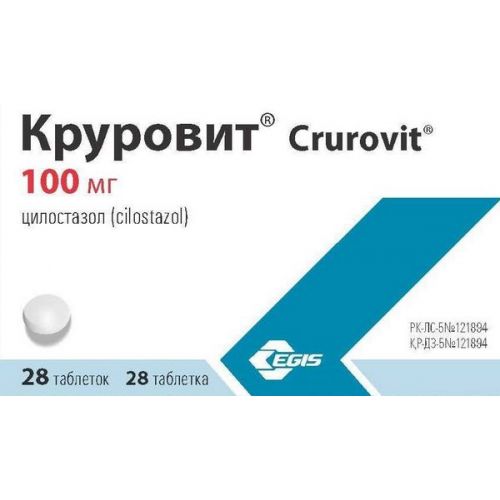
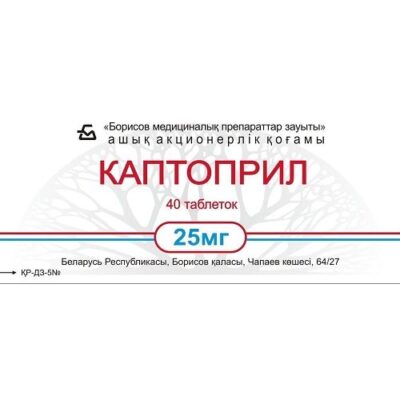
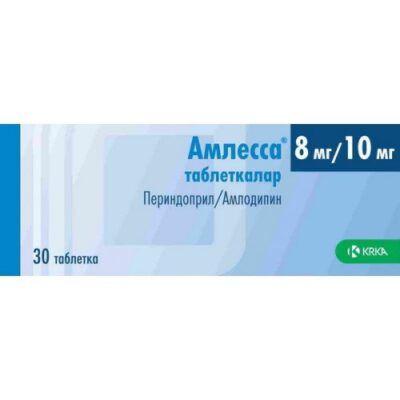
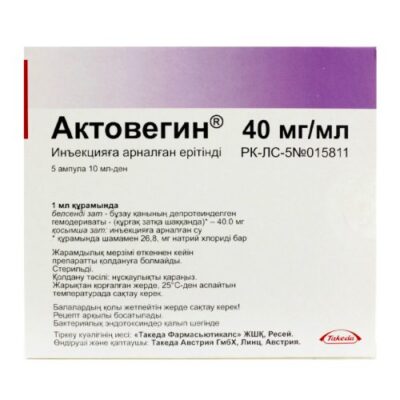
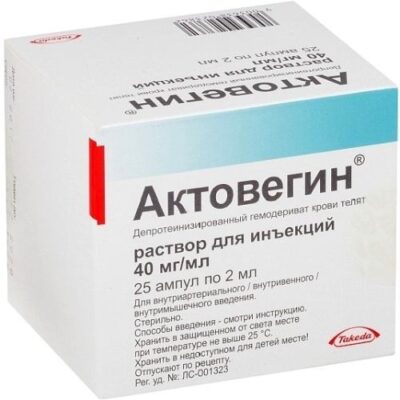
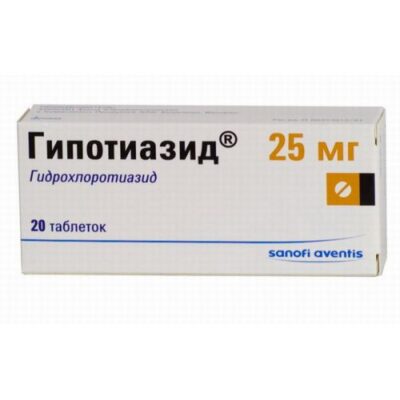
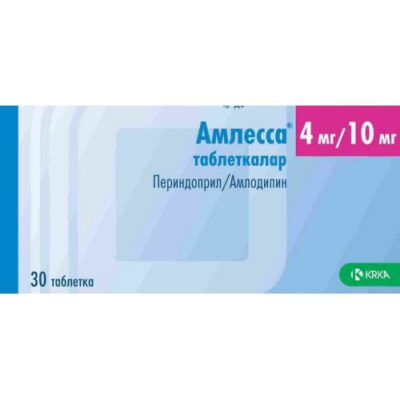
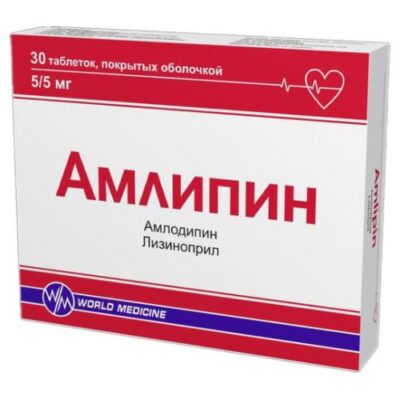
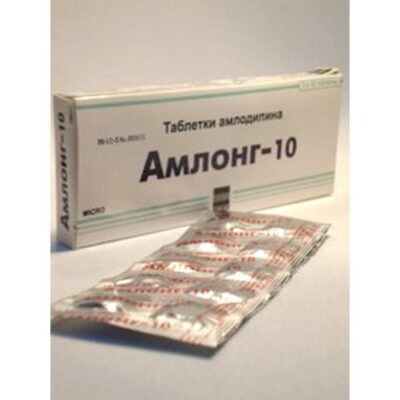
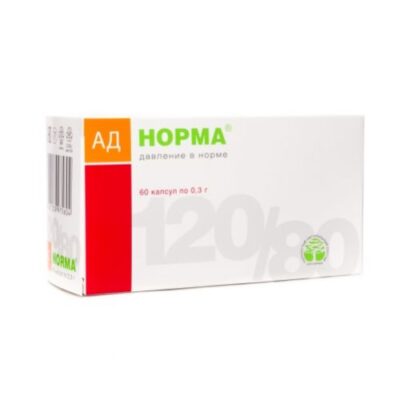
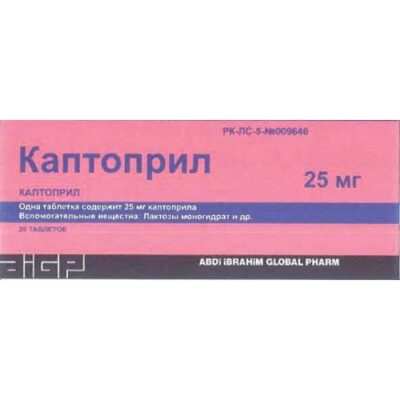






Reviews
There are no reviews yet.